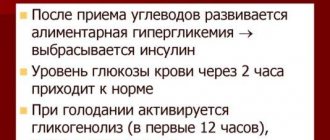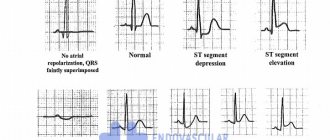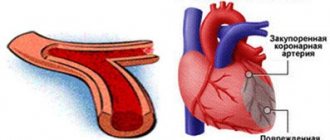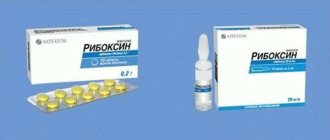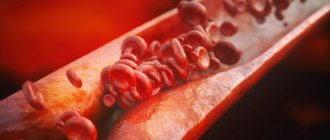Rostov region, August 21, 2021. DON24.RU. Cardiac surgeons have this expression: “the door is a balloon.” This is the period of time from the moment the patient enters the department until the start of the operation. Doctors working in the department of x-ray surgical methods of diagnosis and treatment of the City Emergency Hospital of Rostov-on-Don require 20 minutes. Until recently, such a speed would have been called cosmic, but now it allows saving the lives of hundreds of people with heart problems. What is the fundamental difference between open heart surgery and those currently performed using minimally invasive techniques? Can a heart attack go away without consequences? Cardiovascular, X-ray endovascular surgeon of the highest category, chief physician of the Rostov-on-Don State Emergency Hospital, Alexander Ponomarev, told Molot about this.
Rehabilitation after myocardial infarction
| 82% | 26% |
| patients with a heart attack who have undergone rehabilitation return to work and socially active life | of those who have not undergone rehabilitation can return to work and socially active life |
From the speech of Academician E.I. Chazova at the All-Russian Forum “Development of Sanatorium-Resort Care and Medical Rehabilitation”
The Chernaya Rechka Heart Medicine Center has been operating for more than 60 years. According to our statistics, more than 80% of people who have undergone competent rehabilitation after a myocardial infarction return to a full, harmonious and active life. Those who undergo surgery to restore blood supply to the heart muscle are successfully rehabilitated in 90% of cases.
We talked about how rehabilitation works and how to get help in our article.
What is myocardial infarction
Acute myocardial infarction is damage to the heart muscle due to blockage of one of the arteries of the heart - thrombosis. Thrombosis leads to cessation of blood supply and death of a section of the heart muscle, followed by replacement of connective tissue - scarring. Its signs are clearly visible on the ECG.
A heart attack is a complication of coronary heart disease (CHD), which means it does not occur out of nowhere. When complications occur, atherosclerotic plaques and cholesterol deposits form on the walls of the arteries, which are the main cause.
That is why comprehensive rehabilitation in combination with secondary prevention of heart disease, based on the fight against risk factors and practical lifestyle correction, contributes to reducing mortality.
What to do after a heart attack
Rehabilitation after myocardial infarction, along with treatment of the acute phase, is an extremely important process of restoring the body. She helps:
- consolidate the results of treatment,
- prevent the progression of coronary heart disease and possible future complications,
- restore physical activity and cope with psychological trauma,
- create sustainable motivation for secondary prevention throughout life - maintaining a healthy lifestyle.
Rehabilitation takes place in 3 stages: inpatient, rehabilitation center stage, outpatient. In general, rehabilitation can last from six months to a year, depending on how extensive the damage to the heart is.
“Compliance with the stages of treatment helps reduce the risk of repeated operations - by 4 times, repeated hospitalizations - by 6 times, mortality as a result of relapse of the disease - by 2.5 times. Cost savings for the treatment of relapses amount to 30-40%,” E.V. Shlyakhto, chief cardiologist of St. Petersburg and the Northwestern Federal District, President of the Russian Society of Cardiology.
Inside the vessel
Alexander Melnikov, AiF: David Georgievich, you were the first in Russia to perform operations for heart attacks. But doctors have always insisted that operations are contraindicated in case of a heart attack...
Related article Cardiologist: Bitter people are more likely to have a heart attack and stroke
David Ioseliani: The cause of myocardial infarction is blockage of a vessel by a thrombus; it usually forms on an atherosclerotic plaque. In the area where this vessel is located, the heart muscle dies - it lacks oxygen.
But the death of muscle cells of the heart is usually extended over time for 6-8 hours, and sometimes the agony extends even up to two days, the body turns on compensatory processes. And, if blood flow is restored, the area of necrosis (death of muscle cells) will be significantly smaller.
As a result, the consequences of a heart attack will be less serious, there is less risk of developing heart failure, aneurysm, arrhythmias, etc. And if blood circulation is restored within an hour after the onset of the attack, the consequences of a heart attack can be avoided altogether.
Now about surgery. We are not talking about a major operation - we operate endovascularly, which literally means “inside the vessel.” We bring a catheter through the arteries to the vessels of the heart and, under X-ray control, inject a contrast agent into them.
Article on the topic
Chief cardiologist of Moscow: “The heart cannot withstand the modern rhythm of life”
We determine where the vessel is blocked and open it - we pass through a catheter with a special balloon, inflate and expand the lumen of the vessel. And that’s basically it – blood flow is restored. Usually in such cases we also place a stent so that the lumen remains open, even if it is narrowed by plaque.
In fact, this is the so-called balloon angioplasty, and today it is already a routine operation. Even in Russia, it is already done in many places, but not for a heart attack, but as planned.
A heart attack has its own specifics. It is very important to start treating the patient at the pre-hospital stage: emergency doctors should, as early as possible, administer special drugs to the patient that stop the growth of a blood clot - thrombolytics. And organizing this is the most difficult thing, because such medicine costs about a thousand dollars.
But we managed to achieve this in Moscow, and now 40-50% of heart attack patients receive just such treatment in an ambulance, and then they are brought to special centers where they perform angioplasty, which I just talked about. Ours was the first such center in the capital, but now they operate at 13 city hospitals. They are led by my students.
Treatment and observation in hospital
Hospitalization is the first step towards recovery after myocardial infarction.
The inpatient stage lasts from 1 to 3 weeks, during this period the patient receives the following medical care:
- surgical treatment - stenting in case of severe damage to the vessel walls;
- drug treatment - with the help of drugs, pain syndromes are eliminated, the load on the heart is reduced and the formation of new blood clots is prevented;
- feasible physical activity - the ability to sit, turn on the bed and wash is restored, light gymnastics and walks are allowed.
At this stage, careful attention from a strong medical team and constant monitoring of the patients' vital signs are of great importance. This is what helps to prescribe the correct treatment in a timely manner.
Seconds to place, minutes to operate
The Rostov-on-Don State Emergency Hospital today has the most modern equipment: an angiograph, neuroimaging devices, ventilators, expert-class ultrasound, and more. Patients who need emergency care for cardiovascular diseases, primarily myocardial infarction and stroke, are brought here every day. And it is no coincidence that it was decided to create a city vascular center on the basis of this hospital and specifically the department of X-ray surgical methods of diagnosis and treatment (RSMDL).
“I’ve been nurturing this idea for six years. A vascular center is necessary for a metropolis like Rostov, and indeed for any city, - Alexander Ponomarev is sure. – In the structure of mortality, the first place in the world is occupied by diseases of the circulatory system – vascular accidents, that is, heart attacks and strokes. It is unnecessary to explain how important the time factor and the specialized center itself are for such patients. It should be located in such a way that only a few minutes pass from the arrival of the ambulance to the hospital reception and the placement of the patient in the department. And from the moment the patient enters the department until the start of the operation, no more than 40 minutes should pass. We are now within this time period.
Rehabilitation after discharge from hospital
Treatment and monitoring of the patients’ condition continues at the stage of a rehabilitation center or a sanatorium specialized in cardiac rehabilitation. Objectives of the stage: stabilize the physical and psychological state of a person, awaken motivation to lead a healthy lifestyle and adapt to his regime.
During this period the patient receives:
- individual rehabilitation program - pharmacological support and physical recovery;
- practical correction of risk factors: control of blood pressure, blood sugar and cholesterol levels - after a diagnosis of heart attack, this is especially important.
- psychological assistance - analysis of personal characteristics and characteristics of the reaction to illness, psychological support;
- training in healthy lifestyle skills and self-regulation of the body, preparation for returning to work, family and society;
- recommendations for future life - drug therapy and observation, nutrition and physical activity program, lifestyle in its most important manifestations.
The most important process of recovery takes place in the rehabilitation center: the effect of medications is fully revealed, and the contact between the patient and the doctor is as productive as possible. The rehabilitation period is about 3 weeks: 18-21 days.
Let us note that only a center can cope with the task, which combines extensive experience, a solid methodological base and qualified specialists: a cardiologist, psycho- and physiotherapist, doctors and exercise therapy instructors with special training, laboratory and functional diagnostics specialists.
Close cooperation between the patient and medical staff, a positive attitude and a favorable climate also help to minimize the risk of a recurrent attack and return to a harmonious life.
What types of heart surgeries are there?
During a palliative operation, another “defect” is surgically created, which the child does not initially have, but thanks to which the circulatory pathways in the large and small circles disturbed by the defect are changed. This includes surgical expansion of the atrial septal defect, all options for intervascular anastomoses - i.e. additional shunts, communications between circles. The Fontan operation is the most “radical” of all such methods; after it, a person lives without a right ventricle at all. For some of the most complex heart defects, it is impossible to correct anatomically, and surgical treatment aimed at correcting blood flow can be called a “definitive” palliative correction, but not a radical operation.
In other words, in case of heart defects, when the intracardiac anatomy - the structure of the ventricles, the state of the atrioventricular valves, the location of the aorta and pulmonary trunk - is changed so much that it does not allow for a real radical correction, today's surgery follows the path of eliminating poorly compatible conditions as early as possible. life of circulatory disorders, and then long-term palliation. The first stage of this path is saving a life and preparing for further treatment, and protecting against future complications, the second is the final stage of treatment. All together, this is a long path to the final operation, and on it it is necessary to overcome one, two, and sometimes three steps, but, ultimately, to make the child healthy enough for him to develop, learn, and lead an ordinary life, which this long-term palliation will provide for him. Check it out, not so long ago - 20–25 years ago this was simply impossible, and children born with defects of this group were doomed to death.
Such “final palliation” is the only way out in many cases; although it does not correct the defect itself, it provides the child with an almost normal life by improving the mixing of arterial and venous blood flows, completely separating the circles, and eliminating obstacles to blood flow.
Supporting rehabilitation results
Rehabilitation after myocardial infarction is a difficult, but positive and fruitful path. Once you pass it, there is no turning back. Only forward to an active and happy life! To do this, it is necessary to maintain the results obtained:
- lead a healthy lifestyle,
- exercise,
- follow a diet and take heart-supporting medications,
- be regularly monitored by specialists.
Preparing for surgery
The operation is performed both emergency and planned.
Before emergency surgery, the patient is prescribed only the most necessary examination methods:
- ECG;
- determination of blood clotting;
- determination of blood group and Rh factor.
Preparation for a planned operation includes the following studies:
- electrocardiography;
- echocardioscopy;
- chest x-ray;
- blood chemistry;
- general blood analysis;
- general urine analysis;
- determination of blood group and Rh factor;
- determination of blood clotting;
- blood test for the presence of viral hepatitis and HIV infection.
Rehabilitation after cardiac bypass surgery lasts about a month on average. It largely depends on the age of the patient and his general condition.
